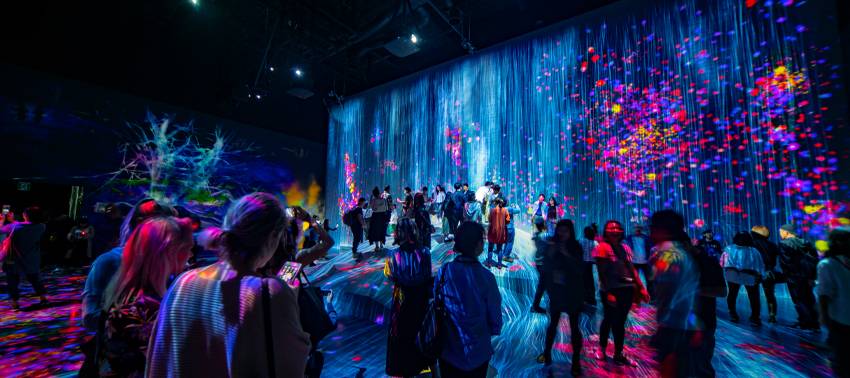
2023 Digital Perspective / Technology and Art
Millions of people now use a new breed of Artificial Intelligence systems to generate never-before-seen pictures. Imagine creating a work of digital art in seconds with artificial intelligence and a single phrase. Artificial intelligence (AI) has been making waves in the art world in recent years, with many artists and art institutions experimenting with using AI to create and exhibit art. While some people have praised AI-generated art as a new and exciting form of expression, others have expressed skepticism or even concern about its implications.
One of the most interesting aspects of AI-generated art is the way it pushes the boundaries of traditional artistic creation. AI algorithms can analyze vast amounts of data and generate new, original works that are not limited by the constraints of human imagination or skill. This has led to some truly innovative and thought-provoking pieces, such as the "Portrait of Edmond de Belamy," which was created by a group of French researchers and sold at auction for over $450,000.
Now millions of people are using these platforms; like MidJourney, Dall-E 2, Chat GPT-3. People's different kinds of styles can be generated from Lensa and Dawn AI commonly. NightCafe, Deep Dream Generator, Artbreeder, Stablecog, DeepAI, StarryAI, Fotor, Runway ML, WOMBO Dream are the others.

Technology like this has some artists excited for new possibilities and others concerned for their future. MidJourney is one way that artificial intelligence can output a selection of images based on words and phrases one feeds it. The program gathers possible outputs from its dataset references that it learned from — typically pulled from the internet — to provide possible images.
Another aspect of AI-generated art that has garnered attention is the way it challenges the role of the artist. In the past, the artist was seen as the sole creator of a work of art, but with AI, the line between human and machine becomes blurry. Some artists have embraced this shift and are using AI as a tool to augment their own artistic process, while others have expressed concerns about the potential for AI to replace human creativity and skill.
Despite the excitement surrounding AI-generated art, there are also valid concerns about its implications. One concern is the potential for AI to be used to produce mass-produced, generic art that lacks the depth and originality of human-created art. Another concern is the potential for AI to be used to create art that is biased or unethical, due to the data and algorithms that it is trained on.

AI-generated art is a fascinating and complex topic that raises important questions about the nature of artistic creation and the role of technology in art. While it has the potential to revolutionize the art world, it is important to consider the potential risks and ethical implications of using AI in this way.
It is difficult to predict with certainty what the trend of artificial intelligence (AI) generated art will be in 2023, as it depends on a variety of factors including technological advancements, cultural shifts, and the actions of individual artists and art institutions. However, based on the current state of the field and the direction it has been heading in recent years, it is possible to make some informed guesses about what we might see in the near future.
One possibility is that AI-generated art will continue to gain recognition and acceptance within the art world. As AI algorithms become more sophisticated and are able to produce increasingly complex and nuanced works, it is likely that more artists and institutions will be interested in exploring the potential of this technology. This could lead to more exhibitions and events featuring AI-generated art, as well as greater interest from collectors and the general public.

Another possibility is that the use of AI in art will become more widespread, as artists and institutions seek to use it as a tool to augment their own creative processes. This could lead to a proliferation of AI-assisted artworks, in which human and machine elements are seamlessly integrated to create something new and unique. It is also possible that the trend of AI-generated art will face backlash or resistance from some quarters. Some people may continue to view AI-generated art as lacking in authenticity or originality, or may be concerned about the potential for AI to replace human artists or to produce biased or unethical works. This could lead to debates and controversies within the art world about the place of AI in artistic creation.
Overall, it is clear that the trend of AI-generated art will continue to evolve and change in the coming years. Whether it will become more widespread or face resistance remains to be seen, but it is certain that this technology will continue to challenge and inspire artists and art lovers alike.